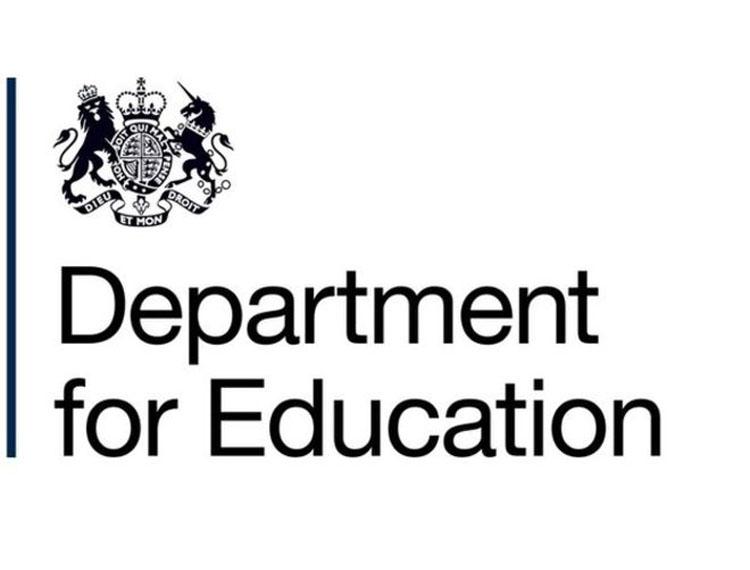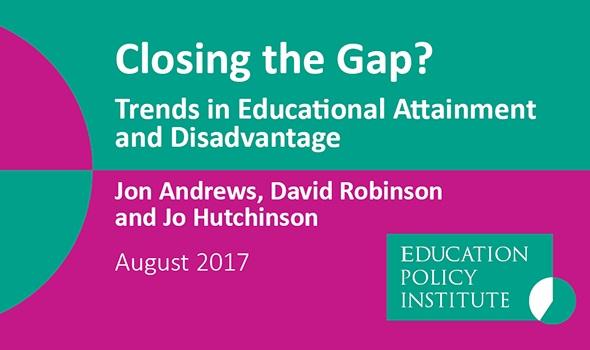Widening participation in higher education and the attainment gap – Sector response

Department for Education today (3 Aug) published their Annual statistics on young people’s participation in higher education, including their social background and occupation after graduating.
New figures from the Department for Education have shown the progression rate of free school meal (FSM) pupils has increased but so has the gap between FSM and non-FSM. The data – based on the exam results of children eligible for free school meals – shows that the attainment gap between disadvantaged children and their peers has narrowed since 2011. More disadvantaged students than ever are also now attending university. More still needs to be done to highlight the available professional opportunities open to young people, like degree apprenticeships which don’t come with the burden of university debt.
Chartered Management Institute response to widening participation in higher education statistics
 Petra Wilton, director of strategy for the Chartered Management Institute, said:
Petra Wilton, director of strategy for the Chartered Management Institute, said:
“The traditional university route is out of reach for many school leavers, leaving too many behind. The new breed of degree-level apprenticeships, like the Chartered Manager Degree Apprenticeship, will help tackle the UK’s growing skills gap. Funded by the Apprenticeship Levy, students can now earn as they study for a degree. Schools, employers and parents need to work together to change perceptions get more young people starting degree apprenticeships.”
Universities UK response to widening participation in higher education statistics
Universities UK has today responded to the Department for Education’s widening participation in higher education statistics.
Commenting on the widening participation in higher education statistics published today,
 Alistair Jarvis, Acting Chief Executive of Universities UK, said: “Universities have made considerable progress in this area in recent years, but there is more work to be done.
Alistair Jarvis, Acting Chief Executive of Universities UK, said: “Universities have made considerable progress in this area in recent years, but there is more work to be done.
“All universities are committed to widening participation and to ensuring that everyone is given the right support to succeed.
“The 2016 report from Universities UK’s social mobility advisory group recommended that universities should work even more closely with schools and colleges in a range of ways, given the strong link between a student’s prior attainment at school, and their outcomes at and beyond university.
“The report also recommended that, to make further progress, more effective evaluation of policies and interventions is needed. We need to improve the use of data in driving future developments and a focus on ‘what works’ underpinned by a robust and systematic use of the evidence.”
Department for Education response to widening participation in higher education statistics
 Universities Minister Jo Johnson said:
Universities Minister Jo Johnson said:
“I welcome the fact that the proportion of people on free school meals going to university is now at its highest ever level. We have made significant progress to ensure that everyone, no matter what their background, gets the chance to study at the UK’s world-leading universities.
“Recent UCAS data shows young people from disadvantaged backgrounds are 43% more likely to go to university compared with 2009/2010, but we know there is more to do to close the gap between those from the most and least advantaged backgrounds. That is why we insist that all universities must demonstrate how they are widening access before they can raise their fees above £6000.
“Through the Higher Education and Research Act, we are also requiring universities to publish their admissions, attainment, and retention rates to shine a light on where more must be done to tackle inequality. This is on top of the Teaching Excellence Framework which will explicitly look at how providers are achieving positive outcomes for disadvantaged students.”
 In a new report “Closing the Gap? Trends in Educational Attainment and Disadvantage“, also published today (3 Aug), the Education Policy Institute has examined the progress made in closing the gap in attainment between disadvantaged pupils and their peers. The analysis considers how that gap varies across the country and how it has changed since 2007.
In a new report “Closing the Gap? Trends in Educational Attainment and Disadvantage“, also published today (3 Aug), the Education Policy Institute has examined the progress made in closing the gap in attainment between disadvantaged pupils and their peers. The analysis considers how that gap varies across the country and how it has changed since 2007.
Today, Thursday 3 August, the Education Policy Institute (EPI) released a new report looking at the progress made in closing the gap in attainment between disadvantaged pupils and their peers.
While the overall attainment gap between disadvantaged pupils and their peers is narrowing, the report suggests that for those who are long-term disadvantaged the attainment gap is widening. Areas such as Derby, Cumbria, Knowsley, South Gloucestershire, Dudley and Darlington are showing considerable attainment gaps.
There was an article in the Spectator, arguing that poor attainment in areas where there are pockets of deprivation is not necessarily due to poorer school standards. The piece cites bigger societal issues and references the Tauheedul Education Trust in Blackburn, where its hands-on approach with parents has seen real success in academic results and pupil outcomes.
A Department for Education spokesperson said:
We are determined to ensure that all children, regardless of their background, get the excellent education they deserve.
Our data, which looks at the number of children who have been eligible for free school meals in the last 6 years, shows the attainment gap between disadvantaged children and their peers has narrowed since 2011.
But there is more to do. That is why, through the Pupil Premium, we are investing almost £2.5bn of additional funding this year to support schools in raising the attainment of disadvantaged pupils.
On top of this, our £72m Opportunity Areas programme will not only create opportunities for young people in social mobility ‘coldspots’ across the country, but best practice will be spread wider to more schools to ensure all young people get the opportunities they deserve.
ATL comment on EPI report on gap between disadvantaged pupils and their peers
Commenting on the EPI Report: New analysis on gap between disadvantaged pupils and their peers,
 Dr Mary Bousted, general secretary of the Association of Teachers and Lecturers (ATL), said: “This is yet another report that shows the Government is not doing enough to close the achievement gap between disadvantage pupils and their peers.
Dr Mary Bousted, general secretary of the Association of Teachers and Lecturers (ATL), said: “This is yet another report that shows the Government is not doing enough to close the achievement gap between disadvantage pupils and their peers.
“The report demonstrates that the link between social demography and educational destiny has not been broken. There is still a huge distance between those at the bottom and those at the top in terms of earnings, life-chances, life-expectancy, and more. These aspects are what makes the difference in educational achievement.
“The solutions do not lie entirely with schools; for the best results for young people, we must end child poverty and then go further to create a less unequal society. The Government therefore needs to address root causes of disadvantage as well as provide money for those services beyond schools that support children, young people and families.
“Rather than forcing continuous change in education, the Government should prioritise closing this gap. This will require sufficient funding and investment in trained, qualified staff in schools and colleges.”











Responses